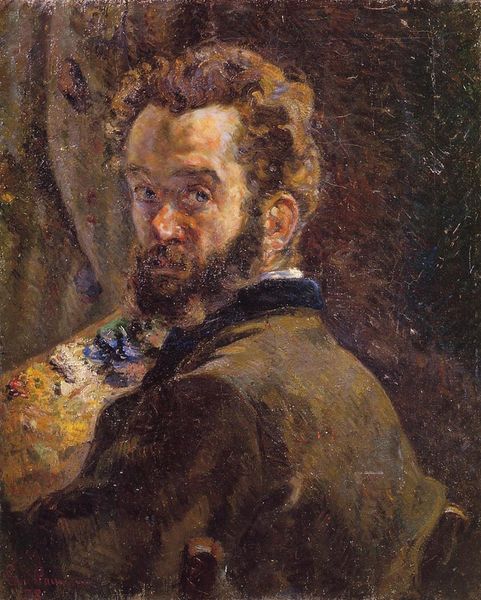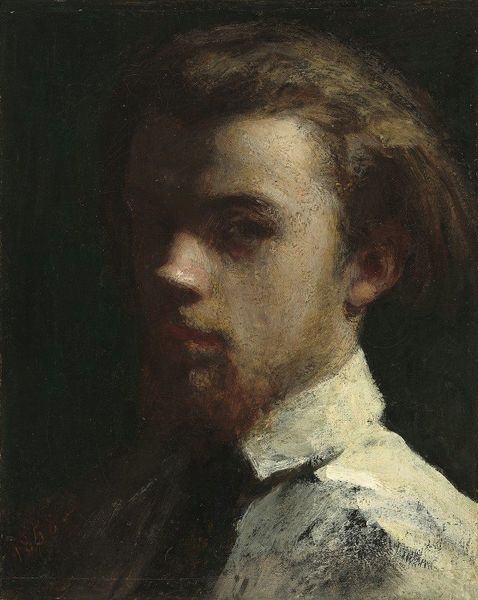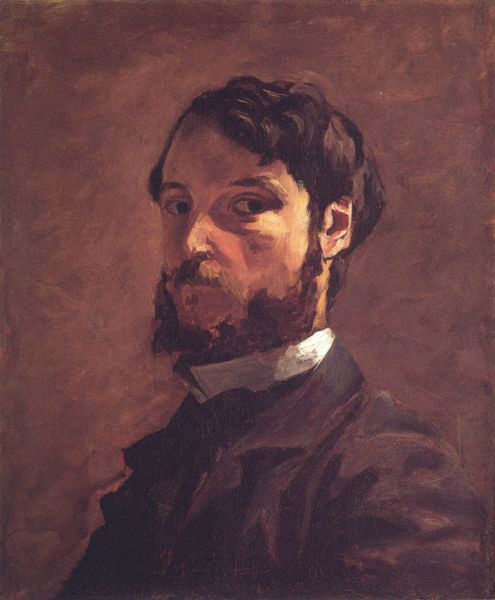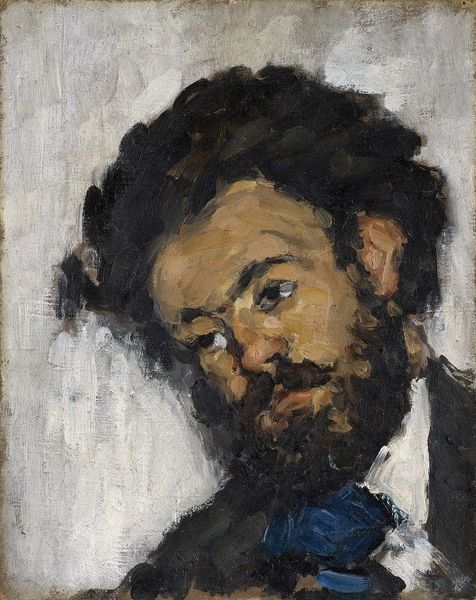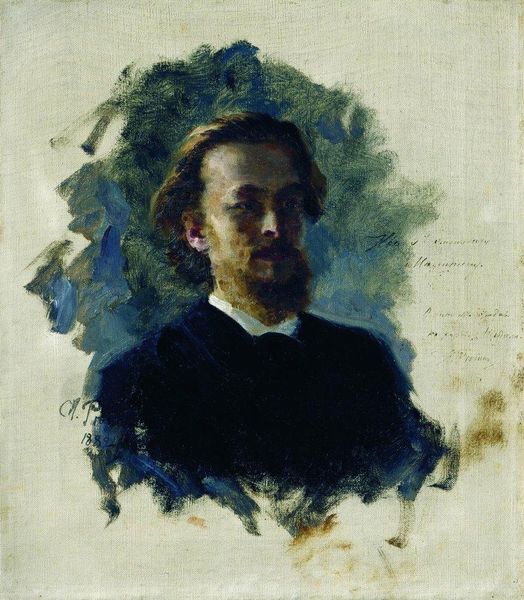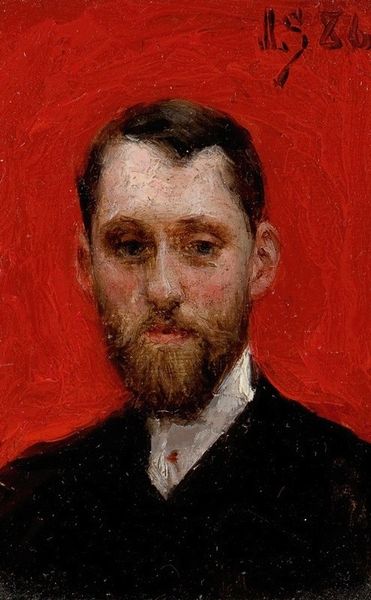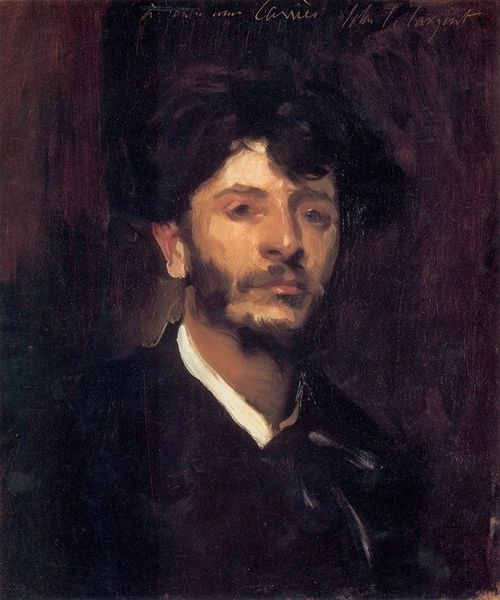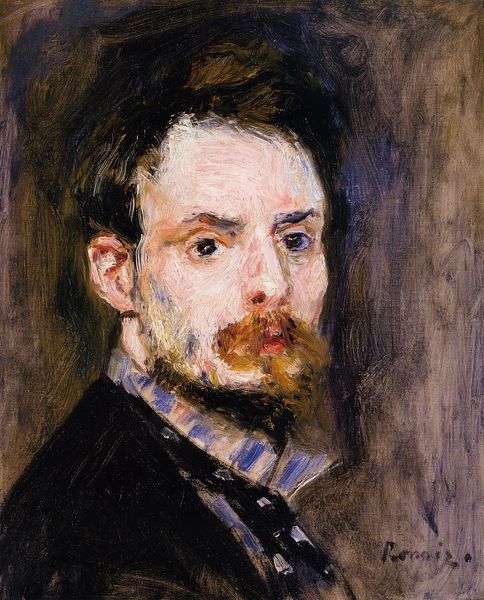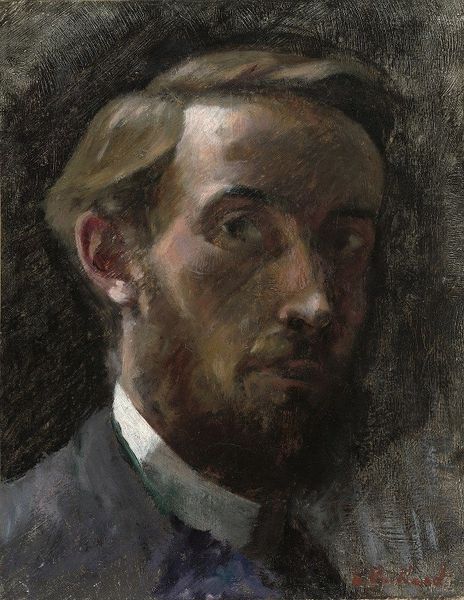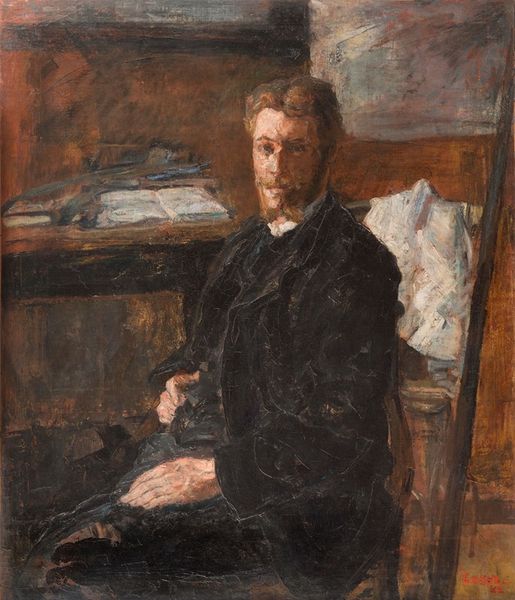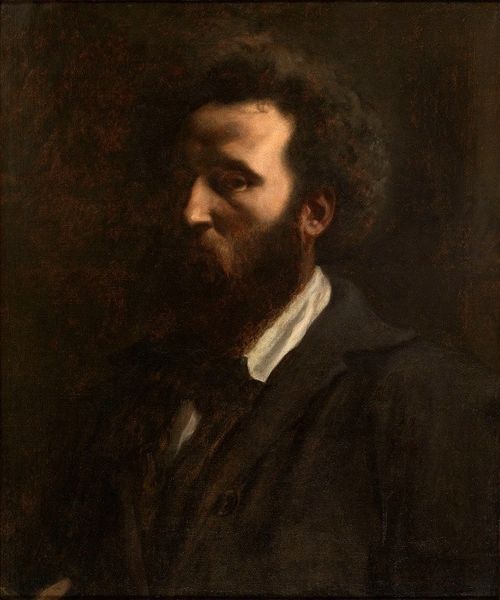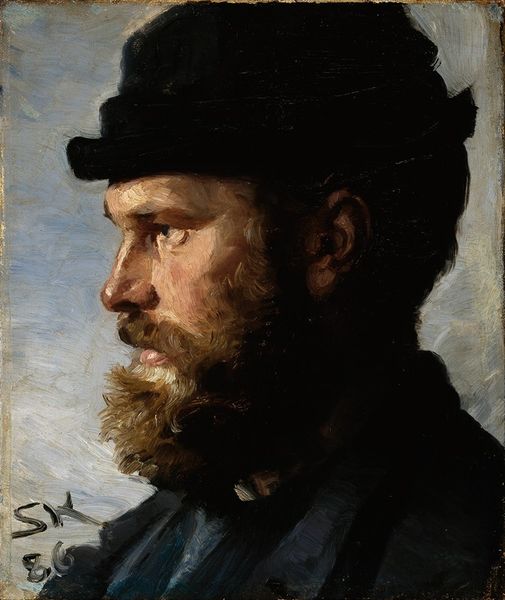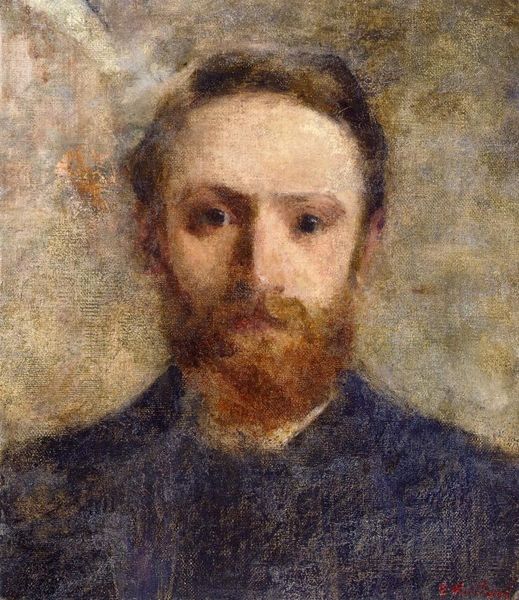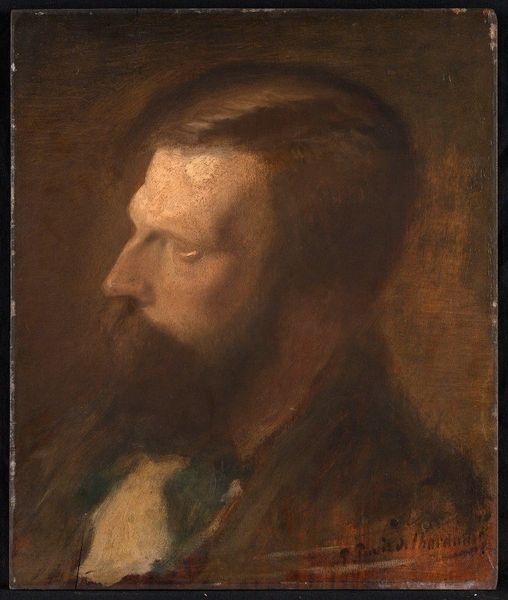
Copyright: Public domain
Editor: Standing here, we have Antonio Mancini’s "Self-Portrait," rendered in oil on canvas around 1878. I’m struck by how raw and unfinished it feels, particularly the stark contrast between the detailed face and the almost violently brushed-in background. What sort of context was Mancini working in when he created this? Curator: That rawness is key. This portrait comes at a time when artists are pushing against academic constraints and embracing a more subjective, immediate mode of representation. Think of the rising art market, and the need to stand out from tradition. What do you notice about the subject's gaze? Editor: He seems very self-aware, almost confrontational, but also vulnerable. Was that a common trope in self-portraits of the era? Curator: To some extent, yes, but the honesty is important. Consider the burgeoning psychological sciences influencing artistic thought. Artists like Mancini were concerned with conveying inner states. It is important to look at what institutions are rising and their values. This painting reflects an era grappling with changing perceptions of the self, the role of the artist, and their place in society. Does that reading change how you experience the work? Editor: Absolutely. Knowing it’s not just a portrait but a reflection of larger societal shifts makes it so much more compelling. It adds a layer of meaning to the apparent immediacy of the brushwork, like a performance for the viewer, as if he is aware of this. Curator: Exactly. It allows you to reflect upon the artistic landscape itself! I hadn't quite considered the performing element before now. Editor: It has been great to delve into both Mancini's individual journey and how the art world around him molded it. Thanks for your insight.
Comments
No comments
Be the first to comment and join the conversation on the ultimate creative platform.
